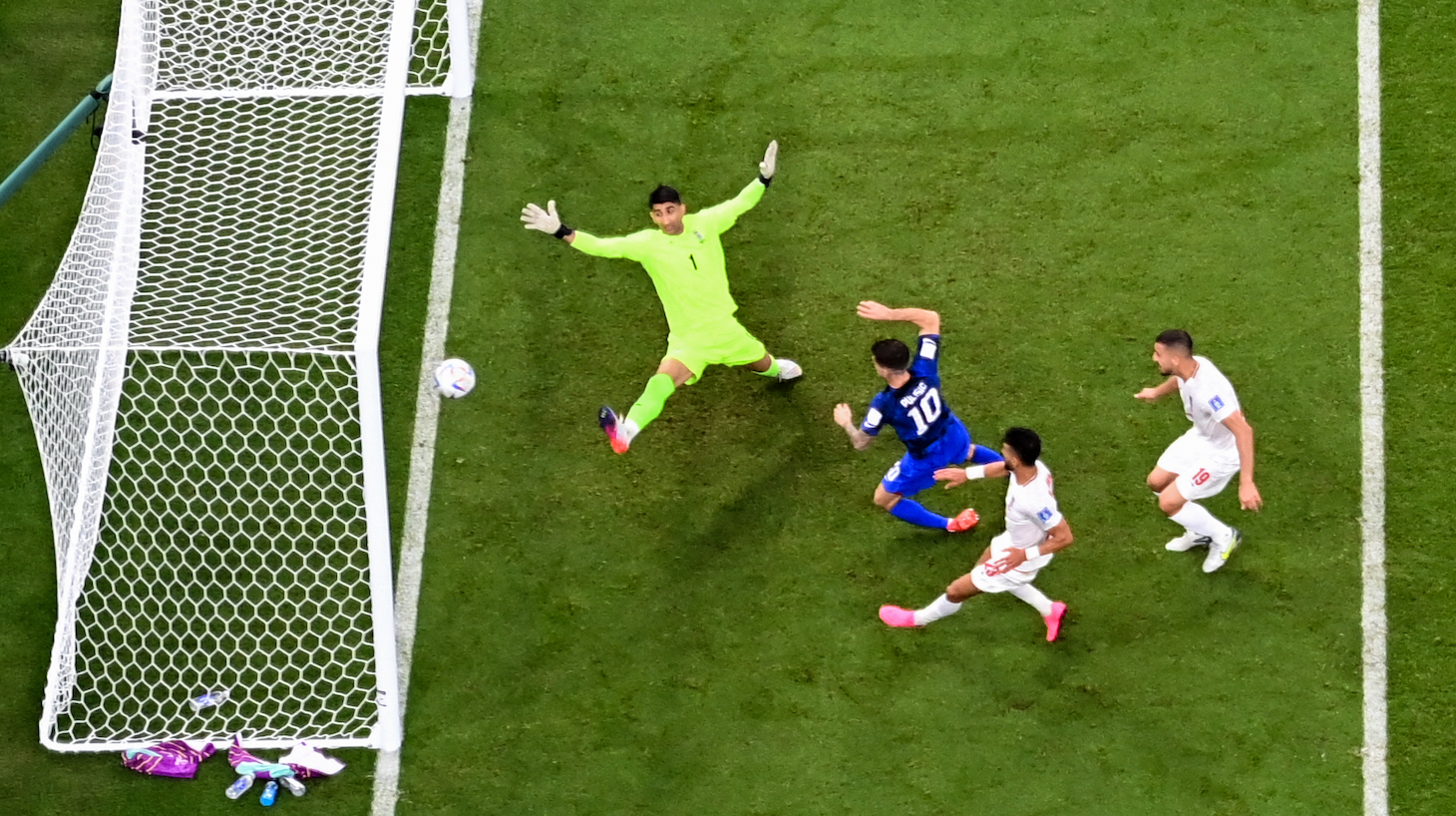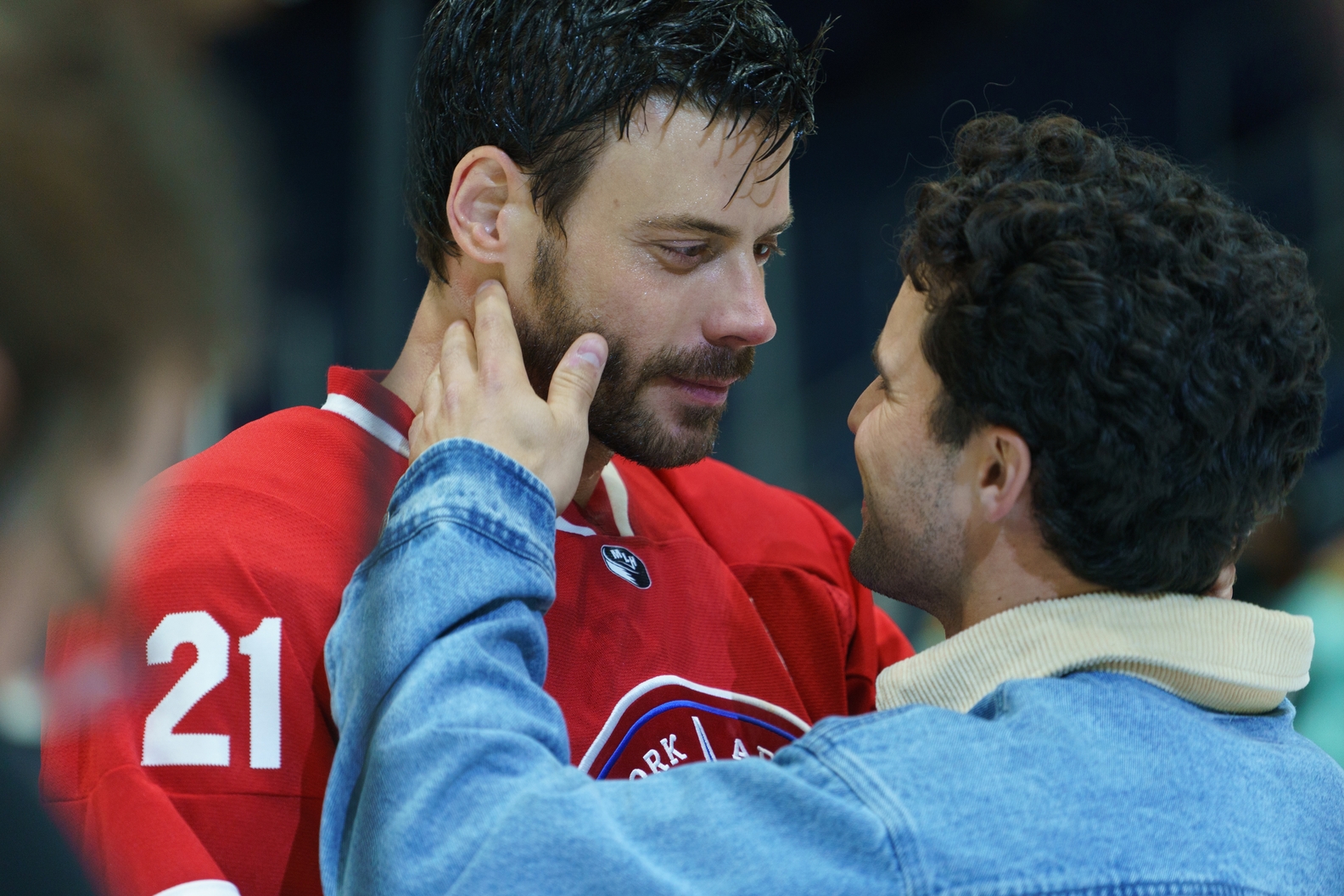Coming into Tuesday's do-or-die match against Iran, the USMNT had already had a very good World Cup. True, they had yet to win a game, and had only scored a single goal in two outings, but the quality of their play was plenty encouraging.
The proof was there in the performances. The Americans orchestrated one of the most dominant halves of soccer in recent USMNT history during the first 45 minutes of the tournament opener against Wales, epitomized by a beautiful goal that stood as yet another augury of this young generation's sparkling future. Nevertheless, a well-timed substitution and a tactical tweak allowed Wales to fight back into the match over the second half, and a foul in the box gave Wales an equalizing penalty and a disappointing draw. Taken together, the two halves hinted at the team's promise and potential, but also indicated points of needed improvement.
England was next on the U.S.'s docket. Against one of the tournament's title hopefuls, themselves coming off a gauntlet-throwing tournament opener, the USMNT played an even better match than the Wales one. Armed with a new hybrid playing system—4-4-2 in defense and the customary 4-3-3 in possession—the Americans muzzled the vaunted English attack and posed a constant threat to the English defense. It was a masterful performance, a team with considerable but still inferior talent out-competing and also out-playing their ostensible betters. That match too ended in a draw, but where the Wales draw felt like a loss, the English one felt like a win—or, at least, it felt as if victory, and significant victory at that, was fully within this team's grasp.
Now, as this is U.S. men's soccer, a sport in which American fans are accustomed to watching our boys bruised and battered but bravely clinging on with grit and scrappiness and other euphemisms for under-talentedness, it was easy to be fatalistic coming into the Iran game. Neat passing and pressing sequences, the run of play, and, even worse, positive expected goals margins may evince solid process, but a concrete record of one goal and two draws implies something else. It's hard to argue for greatness with such meager returns. The main flaw exposed in both the U.S.'s prior matches was a lack of reliable scoring punch. With a little more scoring oomph, the U.S. enters Tuesday's game sitting on six points and deciding how many starters to rest ahead of a round of 16 match they're favorites to win. But without reliable scoring punch, in a match the U.S. had to win to advance, the Iran game looked daunting.
Questions abounded: Could the U.S. do it? Did the positive stretches in the Wales and England games suggest a legitimately strong team just waiting to break out? Or were those stretches illusions, coping mechanisms that tried to make a forest out of two or three trees? Was this truly a new USMNT, one capable of not just playing an attractive and sophisticated style but also able to win with it? Or would the Iran game bring the team back to earth, back where the American men's soccer has already been for so long, a team capable of inspiring but not aspiring? In short: What is the real USMNT, and is it actually any good?
The most important answer the U.S.'s 1–0 win against Iran provided was that yes, your eyes were not lying, this team is indeed very good.
Probably the first step to being a great team is believing you are a great team, and the U.S. came into Tuesday's match dripping with self-belief. Once again the Americans put together an excellent first half. The U.S. played confident, domineering soccer, zipping the ball around the pitch, gashing Iran down the flanks with scything runs from fullbacks Sergiño Dest and Antonee Robinson, and all around playing like a team that knew it would win. Pressure on the Iran goal built steadily, almost inevitably, throughout the first half hour.
If the U.S. seemed energized by the prospect of achieving the victory it needed to advance to the knockout rounds, then Iran seemed nervous about losing the draw it needed to go through. The Iranians defended decently but couldn't plug all the holes the Americans were constantly ripping into their defense from all sides. Even when they had the ball themselves, Iran hardly ventured forward in the first period of play, and they didn't take a single shot compared to the U.S.'s nine first-half attempts on goal.
One such attempt on goal came in the 38th minute, when Weston McKennie sent a raking ball over the top of the Iranian back line, which found the head of an onrushing Dest, who smartly nodded the ball over the the left flank. Christian Pulisic's foot found the ball and scooped it into the back of the net just before the Iran goalkeeper's knee found Pulisic's own balls. Despite the painful injury—Pulisic toughed it out until halftime, but was then substituted out of the game; medics took him to the hospital, but he appears to be more or less fine now—Pulisic's strike gave the U.S. the goal it needed.
The rest of the match played out as these often tend to. The U.S. continued to control the match on the other side of halftime, but they couldn't snag the second goal that would've given them peace. (The closest they came was from another sensational Tim Weah finish in first-half stoppage time, for which he was just a hair offside.) As the half wore on, the U.S. and Iran swapped places: the Americans became worried about giving up the advantage they'd earned, while the Iranians were driven by the prospect of the winning draw. Nerves, tired legs, and unremarkable substitutes saw the U.S. lose their command on the game for the final half hour and revert to turtle mode, while Iran fought valiantly until the end. Iran gave the U.S. a few real scares, but they couldn't find salvation. By the final whistle, the Americans were gassed but ecstatic. They had won and they'd deserved it.
Rooting for a national team of the U.S.'s caliber is sort of a funny thing. The team isn't (yet . . . ?) good enough that fans can rightly demand passage into the World Cup knockout rounds and expect a win or two there, nor is the team bad enough that any old performance at a World Cup is good enough. Where you place expectations, then, and what constitutes success or failure, isn't always clear.
The only thing you can really ask of a team like this is progress. Markers of progress aren't always found simply in the team's record in big tournaments, and to accurately assess the USMNT's status, it's important to have a holistic view that takes into account things like the number of European-grade players the country is producing, the leagues and clubs the players play at, the roles they have there, the national team's performances outside World Cup play, and, yes, granular things like a gorgeous technique on a shot or neat passing and pressing sequences within important, maximally competitive matches.
That's the great thing about this USMNT. The progress of these players is right there before your eyes, in the clubs that sign them and the transfer fees they command and the in-game gestures and actions they're capable of and even the draws and wins they earn in the World Cup. The USMNT has grown so much that it's already manifested in the results the team gets where it matters most. American fans can trust that now, and can enjoy the ride watching how far they can take it. Because if you thought this team was good, you've just been proven right.







